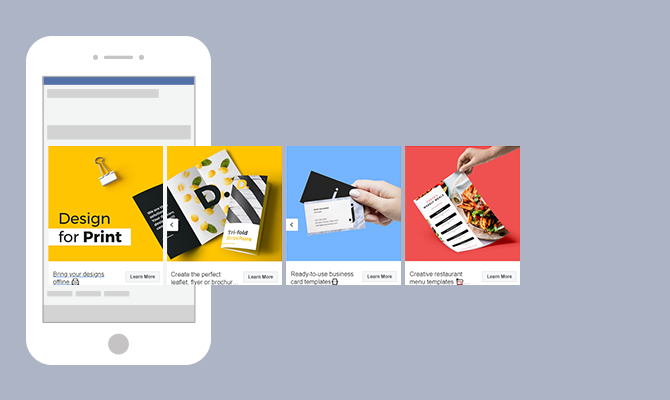In the world of digital advertising, one format has been gaining significant popularity: carousel ads. These ads are transforming the way businesses engage with their audience and offer a dynamic, interactive way to showcase products or services. In this article, we will explore carousel ads, their benefits, how they work, and their impact on the advertising industry.
What Are Carousel Ads?
Carousel ads are a type of display ad format that allows advertisers to showcase multiple images, videos, or product listings within a single ad unit. Typically seen on social media platforms like Facebook, Instagram, and LinkedIn, carousel ads enable users to swipe or click through various media elements, creating an interactive and engaging experience.
Each “card” in a carousel ad can contain different content, allowing businesses to tell a story, promote multiple products, or highlight various features in a single ad. This format is often used by brands that want to grab attention and deliver more than one message without overwhelming the audience.
Key Features of Carousel Ads
Carousel ads are designed to be visually appealing and user-friendly. Here are some of their key features:
- Multiple Cards: Carousel ads can feature up to 10 different cards, each containing a different image, video, or piece of text.
- Interactivity: Viewers can swipe through or click on the cards to engage with the ad, which helps improve user interaction and engagement.
- Customizable: Each card in the carousel can be tailored to specific campaign objectives, whether it’s product promotions, brand storytelling, or announcements.
- Call-to-Action (CTA): Each individual card can have its own CTA button, such as “Shop Now” or “Learn More,” driving users toward desired actions.
- Targeted: Like other digital ads, carousel ads can be highly targeted based on user data, allowing businesses to reach specific demographics, interests, or behaviors.
How Do They Work?
Carousel ads work by allowing advertisers to upload multiple images or videos into a single ad unit. These elements are then displayed sequentially, giving users the ability to scroll through the content. On social media platforms, users can swipe left or right through the carousel, interacting with each piece of content.
The process typically follows these steps:
- Create the Ad: Advertisers upload multiple pieces of content that align with their campaign goals. These can be product images, promotional offers, or even brand storytelling elements.
- Set Targeting Parameters: Advertisers choose the audience they want to target based on demographics, interests, behaviors, and more. This helps ensure the ad reaches the right people.
- Monitor and Optimize: As the ad runs, marketers can track its performance using analytics tools. This helps them understand how users are engaging with the carousel and adjust the ad’s content if necessary.
A Deep Dive Into The Benefits!
Carousel ads have a variety of advantages for both advertisers and users. Some of the most notable benefits include:
- Higher Engagement Rates: Because carousel ads are interactive, they encourage users to engage more with the content. Swiping through multiple images or videos creates a sense of involvement, increasing the likelihood of users taking action, such as clicking a link or making a purchase.
- More Creative Freedom: With the ability to include multiple visuals in one ad, carousel ads allow for more creativity. Brands can experiment with different messaging, product images, and formats to see what resonates best with their audience.
- Better Performance Metrics: Carousel ads often have higher click-through rates (CTR) compared to single-image or single-video ads. The ability to showcase multiple offerings increases the chances that users will find something they like and take action.
- Cost-Effective: Carousel ads can also be more cost-effective than running multiple separate ads for each product or feature. Instead of creating individual ads, businesses can combine several products into one ad, saving time and money on ad production and management.
- Enhanced Storytelling: Carousel ads provide an excellent opportunity for brands to tell a story over several frames. Whether it’s a step-by-step product demo, a behind-the-scenes look, or a narrative that showcases different aspects of a brand, this format helps create a deeper connection with the audience.
How Carousel Ads Impact AdTech
Carousel ads have influenced the advertising technology (AdTech) landscape in several important ways. Here are a few of the key impacts:
- Increased Focus on Data and Personalization: The interactive nature of carousel ads makes them perfect for data-driven marketing. Advertisers can test different versions of an ad, track user engagement, and optimize campaigns in real-time based on performance metrics. As a result, AdTech tools and platforms have become more sophisticated, offering detailed analytics and personalization options.
- Integration with AI and Machine Learning: AdTech companies have integrated machine learning and artificial intelligence into carousel ad platforms to improve targeting and ad delivery. AI can help identify patterns in user behavior. Therefore, enabling advertisers to serve the most relevant carousel content to each individual user.
- Advanced Retargeting Capabilities: Carousel ads also work well with retargeting strategies. For example, a business might target users who have previously shown interest in a product but haven’t made a purchase. Carousel ads can present them with a personalized selection of similar items, increasing the likelihood of conversion.
- Cross-Platform Compatibility: Carousel ads are versatile and work across multiple platforms, including social media networks, websites, and mobile apps. This cross-platform capability enhances the overall reach of advertising campaigns, making them more effective in diverse digital ecosystems.
Best Practices for Using Carousel Ads
To maximize the effectiveness of carousel advertisements, advertisers should follow these best practices:
- Keep It Simple: Ensure that each card in the carousel has a clear and concise message. Overloading users with too much information can lead to disengagement.
- Focus on Visual Appeal: High-quality images and videos are essential for grabbing attention. Use eye-catching visuals that align with your brand and campaign objectives.
- Test and Optimize: Continuously test different variations of your carousel ad to see which elements drive the most engagement. Use A/B testing to find the most effective combination of images, copy, and CTAs.
- Align with Mobile Usage: Carousel ads are often viewed on mobile devices. Thus, ensure that your content is optimized for smaller screens and touch-based interaction.
Conclusion

Carousel advertisements are indeed an exciting and effective tool in the AdTech industry, offering businesses the opportunity to create engaging, interactive campaigns that drive higher user engagement and better performance. By leveraging the power of visuals, personalization, and targeted messaging, brands can indeed make a significant impact on their audience. As digital advertising continues to evolve, carousel ads will undoubtedly remain a key player in shaping how businesses connect with consumers online.
Frequently Asked Questions (FAQs)
1. What are carousel ads?
Carousel advertisements are interactive ads that allow advertisers to showcase multiple images, videos, or product offerings in a single ad unit, which users can swipe through.
2. Where can carousel advertisements be used?
Advertisers commonly use carousel advertisements on social media platforms such as Facebook, Instagram, LinkedIn, as well as on various websites and mobile apps.
3. What are the benefits of carousel advertisements?
Carousel advertisements boost user engagement, offer creative flexibility, improve click-through rates, and also provide cost-effective solutions for showcasing multiple products or messages in one ad.
4. How can I optimize my carousel advertisements?
To optimize carousel advertisements, use high-quality visuals, test different variations of the ad, keep messaging clear and concise, while ensuring your content is mobile-friendly.


